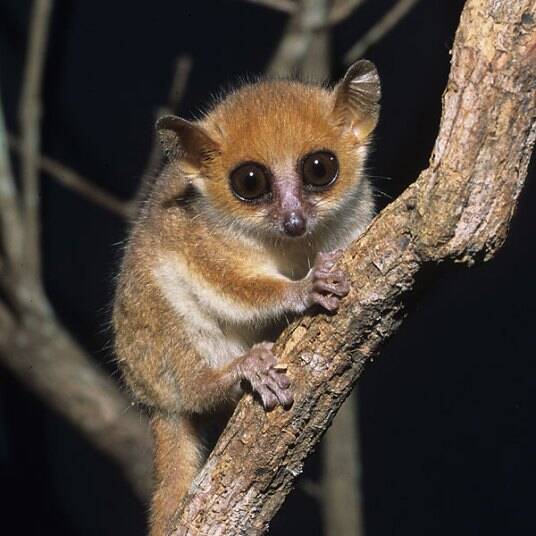Microcebus berthae
IUCN
LCBasic Information
Scientific classification
- name:Microcebus berthae
- Scientific Name:Microcebus berthae.Madame Berthe's Mouse Lemur
- Outline:Primates
- Family:Mylidae Lemuridae
Vital signs
- length:9-11cm
- Weight:About 30g
- lifetime:18-20years
Feature
Considered to be the smallest primate in the world
Distribution and Habitat
The distribution range is limited to the islands of Madagascar located south of the Tsiribihina River, southwest of the Menabe region, with an area of 810 square kilometers.
Appearance
The Bailey's dwarf lemur was a new species discovered in 2000. This dwarf lemur is considered to be the smallest primate in the world. The body length is 9-11 cm, the tail length is 12-14 cm, and the weight is 30 grams. This species has very large forward-facing eyes with a light reflex behind the retina, which reflects light through the eyes, thus improving and having strong night vision. The upper body fur is reddish brown with a black stripe running down the midline of the back extending to the tail. The underbody fur is cream or light gray. This species has a distinctly marked head with a dull white patch above the nose and cinnamon rings around the eyes. Like other dwarf lemurs, it has a long tail and the ears are relatively large and bare.
Details
Berthe's dwarf lemur (scientific name: Microcebus berthae), also known as Madame Berthe's Mouse Lemur, has no subspecies.

The Bailey's dwarf lemur is found in humid tropical rainforests, living in trees and in groups, usually in pairs by streams or rivers. It feeds mainly on fruits and insects. It spends the day hiding in tree holes. In the evening, even if it wakes up, it will wait until sunset before scurrying nimbly between branches. It is a solitary nocturnal species that moves through trees and low-lying vegetation in search of insects, fruits, small reptiles such as geckos and chameleons. The diet of this species is unusual, with its main food source being the sugary secretions (or "honeydew") produced by the larvae of the insect species Flatida coccinea. At dawn, the dwarf lemur hides in vegetation, often a pile of vines, usually accompanied by other individuals of the same species.
The dwarf lemur mates in November each year, and the pups are born in January of the following year. The gestation period is 2 months, with 2-3 pups per litter, and sexual maturity at 2 years old. Lifespan is 18-20 years.
The species is in danger of extinction due to habitat destruction caused by illegal logging and agricultural expansion.
Listed in the 2014 IUCN Red List of Threatened Species ver3.1 - Endangered (EN).
Protect wild animals and eliminate game.
Maintaining ecological balance is everyone's responsibility!








